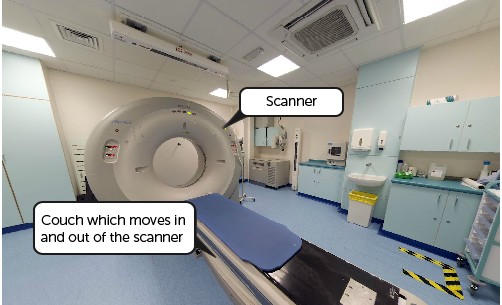Undergoing a medical procedure can bring up a lot of questions, and if you’re scheduled for a PET-CT scan, you might be wondering about the after-effects and how they might impact your daily routine. A common concern, especially for those who drive, is: Can You Drive A Car After A Pet Scan? This article, crafted by carcodepro.com’s auto repair experts, aims to provide you with a comprehensive understanding of PET-CT scans and address this important question, ensuring you’re well-informed and prepared.
Understanding the PET-CT Scan
A PET-CT scan is an advanced medical imaging technique that combines the strengths of Positron Emission Tomography (PET) and Computed Tomography (CT) scans into a single examination. This powerful combination provides detailed, three-dimensional images of your body, helping doctors to diagnose and monitor various medical conditions, most notably cancer.
- CT Scan: Utilizes X-rays to create detailed cross-sectional images of your body’s internal structures, including bones, soft tissues, and blood vessels. It’s excellent for visualizing anatomical details.
- PET Scan: Employs a small amount of radioactive tracer, usually a type of sugar, to detect areas of high metabolic activity within your body. Cancer cells, being more active than normal cells, tend to absorb more of this tracer, making them visible on the PET scan.
By merging these two scans, doctors get both anatomical and functional information, leading to a more accurate diagnosis and treatment plan. The procedure is typically performed in a hospital’s radiology department by a radiographer and usually takes between 30 to 60 minutes as an outpatient procedure.
 Photograph of a PET-CT scanner
Photograph of a PET-CT scanner
Alt text: A PET-CT scanner machine in a radiology room, showing its large, circular shape and advanced medical imaging technology.
Why are PET-CT Scans Performed?
PET-CT scans are valuable tools in oncology and are used for a variety of reasons, including:
- Cancer Diagnosis: Helping to detect cancerous tissues in the body.
- Staging Cancer: Determining the size of a tumor and whether it has spread to other parts of the body.
- Treatment Planning: Guiding decisions on the best course of treatment, including surgery, chemotherapy, or radiotherapy.
- Assessing Treatment Effectiveness: Monitoring how well cancer treatment is working.
- Cancer Recurrence Detection: Checking if cancer has returned after treatment.
- Radiotherapy Planning: Precisely planning the area for radiation therapy.
- Distinguishing Scar Tissue from Active Cancer: After cancer treatment, PET-CT scans can help differentiate between inactive scar tissue and active cancer cells.
Preparing for Your PET-CT Scan
Preparation for a PET-CT scan is crucial to ensure accurate results. Typically, you’ll need to fast for 4 to 6 hours before the scan, although drinking water is usually permitted. It’s also advisable to avoid strenuous exercise for 24 hours prior to your appointment.
If fasting poses a problem, especially if you have diabetes, it’s essential to contact the radiology department. They can provide specific instructions tailored to your needs and may need to adjust your appointment time or dietary guidelines.
For individuals who experience claustrophobia, informing the department staff beforehand is helpful. They can take measures to ensure your comfort and explain the process in detail to alleviate anxiety. In some cases, your doctor might prescribe medication to help you relax during the scan.
What Happens During a PET-CT Scan?
On the day of your scan, you’ll be asked to change into a hospital gown and remove any jewelry and metal objects, including belts, wired bras, and hair clips, as metal can interfere with the scan images. Comfortable clothing without metal, like elasticated waistbands, can be beneficial.
The procedure involves an injection of a radioactive tracer, administered through a cannula (a small plastic tube) in your arm, about an hour before the scan begins. The amount of radiation is minimal. During this hour, you’ll need to rest quietly to allow the tracer to distribute throughout your body’s tissues.
Inside the Scanning Room
You will be taken to the scanning room, which houses the PET-CT machine – a large, doughnut-shaped device. You’ll typically lie down on your back on a movable couch that slides into the scanner. The radiographer will position you correctly and then move to a control room, from where they can monitor you through a window or TV screen and communicate via intercom.
Undergoing the PET-CT Scan
As the scan begins, the couch will slowly move you through the scanner. The machine will take images as you pass through it. While the scan is painless, it requires you to remain still, which can be slightly uncomfortable for some. If you experience stiffness or need to move, you should inform the radiographer. The machine is not excessively noisy, and in many facilities, music can be played to help you relax.
Can You Drive After a PET-CT Scan?
This is a very important question for many patients. Generally, whether you can drive after a PET-CT scan depends on whether you received any relaxant medication.
- If you did not receive any sedatives: In most cases, if you haven’t been given medication to help you relax, you should be able to drive after a PET-CT scan. The radioactive tracer itself does not impair your ability to drive.
- If you received a sedative: If you were given medication to relax you due to anxiety or claustrophobia, you will likely be advised not to drive for the rest of the day. Sedatives can cause drowsiness and impair your reaction time, making it unsafe to operate a vehicle. In such instances, it’s crucial to arrange for someone to drive you home after the procedure.
It’s always best to confirm with your doctor or the radiology department about driving restrictions specific to your situation. They will provide personalized advice based on whether you received any medication and your overall health condition.
After Your PET-CT Scan: What to Expect
After the scan, the cannula will be removed from your arm, and you can resume eating and drinking normally. Drinking plenty of fluids is encouraged to help flush the radioactive tracer out of your system.
If you received a sedative, you will need someone to drive you home and should avoid driving for the remainder of the day due to potential drowsiness.
Regarding radiation, the radioactive tracer emits very low levels of radiation that dissipate quickly. As a precaution, limit close contact with pregnant women, babies, and young children for about 6 hours post-scan, as advised by your radiographer.
If you are traveling internationally within a week of your scan, carrying your appointment letter is advisable. Airport radiation detectors are sensitive and might pick up traces of radiation from the tracer.
Possible Risks
PET-CT scans are generally safe for most individuals, but like any medical procedure, there are potential risks. These are carefully weighed against the benefits of the scan by your doctor and radiographer.
- Pregnancy: PET-CT scans are typically avoided during pregnancy unless absolutely necessary due to the risk of radiation exposure to the fetus.
- Breastfeeding: If you are breastfeeding, inform the department beforehand. You may need to temporarily discontinue breastfeeding for a period after the scan.
- Radiation Exposure: While minimal, exposure to radiation carries a slight, long-term risk of cancer development.
- Bruising and Swelling: Minor bruising at the injection site is possible. Rarely, tracer leakage outside the vein can cause swelling and discomfort.
- Allergic Reaction: Allergic reactions to the tracer are rare but possible, presenting with symptoms like weakness, sweating, or breathing difficulties. Immediate reporting to the radiographer is crucial if you feel unwell.
Getting Your Results
A specialist doctor will analyze your PET-CT scan, and results are usually available within 1 to 2 weeks. You won’t receive results immediately after the scan. Waiting for results can be anxiety-inducing, so don’t hesitate to ask your doctor or nurse about the expected timeframe and whom to contact if you haven’t heard back within a couple of weeks. Support from friends, family, or specialist nurses can be helpful during this time.
In Conclusion
PET-CT scans are powerful diagnostic tools providing crucial information for managing various medical conditions, especially cancer. Regarding driving after a PET-CT scan, if you have not received any sedative medication, you are generally safe to drive. However, if you have been given a sedative, driving is not recommended for the rest of the day. Always confirm driving restrictions with your healthcare provider to ensure your safety and the safety of others. Being well-informed about the procedure, preparation, and aftercare will help you approach your PET-CT scan with confidence and clarity.
For further information and support related to cancer and treatments, you can consult resources like Cancer Research UK or speak with your healthcare provider.
Alt text for featured image: A patient comfortably positioned inside a PET-CT scanner, undergoing a medical imaging procedure with the assistance of medical professionals.

